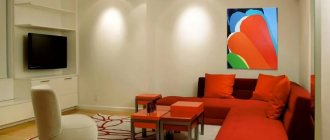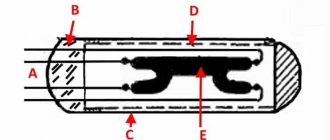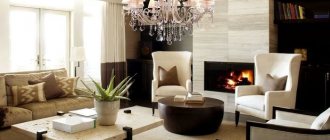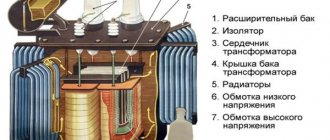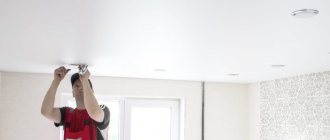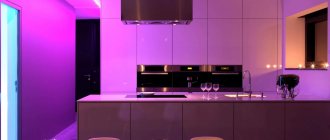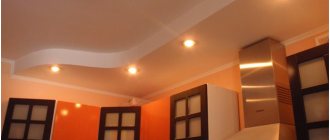Electrician in the house
Encyclopedia about electricity from A to Z
Masters catalog
Find the best master or company in your city
Ceiling lamps
An interesting design of ceilings and lighting can change the perception of the entire room beyond recognition. Properly selected lighting fixtures help create an environment in the rooms that is conducive to relaxation or work.
When placing them, it is important to take into account not only the decorative component, but also the functional characteristics and the specific operation of the room.
- What should you pay attention to when organizing lighting?
- Types of lighting Basics
- Local
- Accent or decorative
- Pendant lamps
- Tension coverings
Recommendations for choosing backlight
Some practical tips for apartment interior lighting design:
- When using niches, double or triple ceiling models in a room with low ceilings, you should carefully consider the lighting so that the structures do not look too heavy and bulky.
- For high-quality lighting, it is advisable to choose a white LED strip.
- An RGB LED strip is suitable as decorative lighting for a box or niche with a curtain rod.
- The lighting should not only enhance and decorate the ceiling space, but also indicate and correctly illuminate all functional areas in the room.
Characteristics of LED strips
For ease of calculation, we have compiled comparative tables of several popular types of SMD tapes.
| Characteristics of LED strips | ||||
| Tape type | Diodes per meter | Power P, W/m | Voltage U, V | Brightness, Lm/m |
| SMD 3528 | 60 | 4,8 | 12 | 240 |
| 120 | 9,6 | 12 | 440 | |
| 240 | 19,2 | 12 | 880 | |
| SMD 5050 | 60 | 12 | 12 | 800 |
| 120 | 24 | 12 | 1600 | |
Be sure to pay attention to the country of manufacture. Brightness values may vary significantly among different manufacturers.
Let's take the popular SMD 3528 (neutral white) 60 pcs/m as an example.
| China | Taiwan | Europe | |
| Brightness, lm/m.p | 240 | 380-420 | Up to 500 |
| Power, W | 4,8 | 4,8 | 4,8 |
Chinese diodes are 1.5 times dimmer than Taiwanese ones and 2 times weaker than European products. Many will argue that they cost 4-5 times less than the “European” ones. You can’t argue with this, but the price of a normal driver for a strip will handle 10 meters of super-budget LEDs.
To make a table lamp, this is a completely decent option, but for lighting an apartment, buying a child from heaven is simply not profitable.
Types of ceilings
There are several types of ceiling structures.
Suspended ceiling
Hanging models are divided into the following types.
From plasterboard
A gypsum ceiling in combination with various lamps allows you to create unusual light accents in the room. See more plasterboard ceiling lighting ideas.
From wooden slats
Built-in lighting located between the slats gives this design a unique and interesting appearance.
The photo shows a slatted ceiling structure with lighting in the living room.
Glass
Glass models visually expand the room and give it lightness; in combination with various external or internal lighting, they look very beautiful and provide quite bright lighting.
Tensioner
see also
Photos of suspended ceilings with lighting
Various textured stretch fabrics allow you to fill the room with a soft glow. Such products look quite impressive and add a romantic mood to the atmosphere.
Stained glass
Original lighting located under the stained glass window adds depth and sophistication to the ceiling space, and allows you to highlight either the entire ceiling or certain sections of it.
The photo shows a stained glass ceiling structure with lighting.
Acrylic
Plexiglas creates original lighting effects and softly diffuses light. Illuminated acrylic or polycarbonate panels form a beautiful and luxurious interior.
Mirror
It gives the room additional volume and spaciousness, and in combination with lighting, mirrors look especially monumental and majestic.
Caisson
In this design, lighting fixtures can be placed both in each cell and in other areas of the coffered model.
More about spot lighting
Spot lighting built into a suspended or suspended ceiling has become popular today. The types of lamps used are practical and are used for a long time. Spot light is scattered evenly over the entire area, which ensures normal illumination.
Key Features
Spotlights placed on a suspended or suspended ceiling illuminate a small area. The dispersion angle does not exceed 30. Therefore, these devices should be placed close to each other. The streams of light have the shape of a cone, which means that they must intersect at the same level, located above all objects and furniture.
Advantages and disadvantages
Advantages of spotlights:
- can be used to highlight certain places;
- have low power consumption;
- can be installed anywhere;
- are small in size;
- emit quite bright light;
- Possibility of execution in different colors.
There are also disadvantages:
- design complexity;
- use of additional power supplies;
- should not be used for low ceilings;
- If overheated, defects may remain on the suspended ceiling.
Backlight options
The choice of lighting fixtures for the ceiling is an important component of the design.
Along the perimeter
see also
Photos of soaring ceilings
These types of perimeter lighting are very often used for various design solutions:
- Soaring ceiling. Due to their unusual effect, flying structures expand the boundaries of space and are therefore perfect for low ceilings.
- Contour lighting. Located along the edges of the ceiling model, it allows you to outline certain shapes and figures and create an interesting play of light and color.
The photo shows a kitchen-living room with a single-level soaring white ceiling.
Internal
Continuous lighting adds volume to the room, enhances color and gives the feeling of a large space.
Lines and stripes
Linear luminaires provide a uniform luminous flux and add charming coziness to the atmosphere. Light bulbs with different power levels allow you to concentrate attention on certain areas of the ceiling plane.
The photo shows a kitchen-living room with lighting in the form of light lines on the ceiling.
Translucent
With the help of such a translucent ceiling, which glows from within, a unique and mysterious atmosphere is created.
Geometric shapes (circles, squares)
Contour lighting gives various geometric shapes additional visual volume and makes them a rather stylish design element.
Spot
Perfectly emphasizes and highlights the functional areas of the room. Spotlights can be used in both single-level and multi-level or combined structures.
Hidden
It is a modern and surprisingly stylish solution that visually lifts the ceiling and gives it a touch of mystery and fabulousness.
The photo shows a ceiling with hidden lighting in the interior of the dining room.
The influence of room height on the type of lamps
The type of light sources installed and their placement depend on the level of the ceiling of the room.
- Spacious rooms with high ceilings are best decorated with oversized chandeliers on long pendants, which perfectly fill the void.
- Hanging lighting fixtures are not recommended for installation in areas with a low ceiling base. You can visually increase the height using devices in which the light flux is directed upward.
- It is better to arrange lighting for the attic ceiling by installing rotary spotlights or surface-mounted devices, abandoning the use of massive lamps.
Light in the attic
Light sources on the ceiling
They allow you to further reflect the individuality of the ceiling structure.
LED strip (LED)
It is particularly flexible and compact and can be mounted on almost any surface. Ice lighting visually changes the geometry of the room, raises the ceiling plane and makes the interior much more attractive and original.
LED lamps
They emit clear, non-blurry light, as close to natural as possible, and fill the room with high-quality lighting that is pleasing to the eye.
The photo shows a kitchen with a ceiling decorated with LED ceiling lights.
Light bulbs
They can have different positions on the ceiling, for example along a contour, along a wall, in a spiral or in several rows.
Spots
They provide the ability to regulate the light flux and direct it to the desired point. Spots perfectly highlight certain areas of the room and create bright lighting in them.
Duralight
The flexible ribbon light cord duralight allows you to create unusual lighting for any design and give it a memorable appearance.
The photo shows pink duralight lighting in the interior of a small living room.
Soffits
They distribute the luminous flux in the form of directed rays. Soffits are distinguished by their convenience, compactness and special aesthetic beauty.
Placement of lamps
Spotlights can be placed in different ways, it all depends on the functionality of the room and the design idea. But most often the following lamp placement options are chosen:
- parallel to each other;
- along the perimeter of the ceiling;
- in the form of an arc;
- circle or square;
- cross;
- in a checkerboard pattern.
How to calculate the number of lamps
To calculate the number of spot lighting devices, it is necessary to measure the ceiling area. So, with a lamp power of 35 W, 1.5 m2 can be illuminated (20 W illuminates 1 m2). With additional lighting, for example, a chandelier, the number of spotlights is reduced.
Illumination standards are presented in Lux per 1m²
It is worth noting that there are types of spotlights equipped with a rotating mechanism or with a lamp inside, this allows you to increase the dispersion angle. Based on this, you can purchase fewer lamps.
On video: how to calculate the number of lamps in a suspended ceiling.
Minimum distance
When choosing spotlights, the following must be considered:
- a distance of at least 20 cm must be maintained from the walls to the lamps;
- between the devices themselves must be left at least 30 cm;
- the distance from the seam of the PVC film should also be more than 20 cm;
- one lamp will illuminate an area of 1.5 m2.
These requirements must be met so that overheating does not occur and, accordingly, the integrity of the material is not compromised (in the case of a stretch ceiling - PVC film).
Related article: Organization of lighting in suspended ceilings: installation and ideas for different rooms | +70 photos
Examples of ceiling structures
Main three varieties.
Single-level
A unique combination of the simplicity of a single-level design with the beauty of a variety of lighting fixtures creates a laconic and very harmonious design.
Two-level
LED strip or lamps especially effectively emphasize the multifunctional two-tier design.
Multi-level
A three-level ceiling allows you to implement the most extraordinary design solutions and create truly impressive and individual projects in the room.
How to calculate the distance between lamps
The distance between lamps is primarily affected by the layout of the elements. However, regardless of it, the optimal distance is 30-40 cm. If the lamps are bright, the distance can be reduced to 20 cm.
If the room provides additional lighting through sconces, floor lamps and table lamps, the number of ceiling lights can be reduced. Accordingly, the distance between them will be greater.
And again we remind you of the importance of reflective elements in the interior. If there are mirrors and glossy surfaces in the room, the streams of light will be evenly scattered throughout the room. In this case, the distance between the lamps can be increased.
An example of the arrangement of lamps at a large distance from each other
An example of placing lamps close to each other
Advice! When calculating the distance between lamps, it is important to take into account the type of ceiling structure. The tension fabric may not withstand excessive load, so you should not “partially” with the elements.
Backlight colors
A certain color or shade shapes the mood of the entire interior.
Neon
Flexible neon has a soft blue or blue glow. This cool shade looks great in both larger and smaller rooms.
Pink
Creates a magical atmosphere and incredibly beautifully envelops individual fragments of the room with magical light.
The photo shows a bedroom and a single-level gray ceiling with pink lighting.
Color (RGB)
Provides several multi-colored options that allow you to customize the ceiling model to suit any mood.
Yellow
It is a rather positive and bright interior solution.
Purple
A non-trivial option that is suitable for those who love non-standard and extravagant design.
White
The simplest, but at the same time very stylish and effective type of lighting, creating a uniform white light flux.
Additional lighting devices
They are installed in a corner for reading, handicrafts, when light accents and highlighting of bright interior items are needed - for example, paintings, stucco moldings, decorations, etc. These are:
- Wall lights . They can be built-in or overhead (sconces), in design - armature, wall-mounted (used in a narrow space, as a backlight for pictures), stationary, adjustable, with a reflected and directed beam. When the main lighting is turned off, sconces create a cozy atmosphere; they are installed near the reading chair to emphasize the interesting texture and stucco molding. Wall sconces in the work area replace a table lamp. When placing sconces, you need to make sure that they do not interfere with the passage.
- Floor lamps . This is the common name for a floor lamp. Typically, such a device has a leg (straight, curved, or even adjustable in height or offset). Thanks to the lampshade and diffuser, the device produces dim, diffused light. The beam is directed up or down, in both directions. But the cap is an optional attribute; models are produced without this detail. Floor lamps can be stationary or portable, with one or more lamps.
- Bottom lighting . Floor-recessed lamps are still rarely used, although they look very impressive, especially in recreation rooms. They are usually built into podiums - like ceiling “points”.
- Desk lamp . They are also placed on the fireplace, bedside tables, near the sofa if they are working on it, etc.
- Optical fiber . This light source is economical and, most importantly, safer than its analogues. It can be used even in damp areas. Optical fiber emits light in transverse and lateral projection. This allows you to create a variety of compositions - for example, the popular “starry sky”. The fiber is cut even when it is turned on - no current is transmitted through it. Although the material is used for the main lighting, its task is still auxiliary lighting.
Ceiling color
The lighting goes well with the ceiling plane of any color.
- Black.
- White.
- Beige.
- Red.
The photo shows a living room with a beige single-level ceiling with lighting.
How to choose a power supply for the tape
You cannot connect the LED strip directly to an outlet. To do this, use a transition element - a power supply. It converts mains voltage (220 V) for LED strip (12 - 24 V).
The transformer must be of the power that the strip backlight consumes. But you definitely need a reserve. If you select a unit with a similar power, the transformer will operate at its peak capabilities. And this does not guarantee a long service life. Therefore, the power supply must be 30% more powerful than the tape.
There are several types of power supply, but when illuminating the ceiling with LED strip, it is better to use an open or network type device. Transformers are also sold sealed and in an aluminum box, which helps with heat dissipation. For this purpose, some models are equipped with a fan.
Ceiling design
The most interesting ceiling designs.
Window to the sky
A false window is an ideal solution for many interiors. The presence of lighting will enhance the effect of bottomlessness and depth of this design.
Night sky
The starry sky fascinates with its twinkling lights and its magical appeal, reminiscent of the galaxy and outer space. This decor will not leave anyone indifferent.
Transparent ceiling
Suitable for small spaces with limited natural light. It provides a sufficient amount of light and thereby becomes the highlight of the interior, which creates a cozy and pleasant atmosphere.
With beam
Spots, spotlights or diode strips can highlight the decorative beauty of the beam and create an emphasis on functional areas.
Unusual ideas
Various types of lighting in combination with unusual ceiling models are an original stylistic device.
On the one side
Side lighting provides the opportunity to illuminate the part of the room that is used most often.
Sky with clouds
It perfectly transforms the space, brings lightness, airiness and gives a feeling of freedom.
With stucco
Lighting highlights the curves and patterns of a molded ornament or design.
With a pattern and backlight
This combination creates various light illusions in space and undoubtedly becomes a bright and original touch.
Unusual ideas for placing lamps
To create a new lighting project, you can be guided by creative ideas:
- arrange spotlights in a snake pattern;
- place one type of lamps in the corners, and mount another in the center;
- choose different colors and arrange them symmetrically;
- arrange spotlights in a semicircle relative to the walls.
You can draw any drawings, take photos and implement ideas, the main thing is to take into account the installation rules.
DIY stretch ceiling lighting (2 videos)
Various ideas (80 photos)
Ceiling shapes
The most common ceiling forms.
Round
Allows you to diversify the interior and make its design truly special. It can be illuminated using any original shade that matches the style of the room.
With a niche
Such models with a box provide clear boundaries of lighting and are a fairly popular interior solution.
Rectangular and square
Hidden lighting will make rectangular or square shapes more noticeable and will not allow them to blend into the general background.
Figured
The wave ceiling looks quite charming; in combination with various lighting effects, it opens up wide possibilities for various experiments.
Which option to choose depending on the type of ceiling
The type of lighting fixture depends on the materials from which the ceiling is made.
Concrete floor
For such a budget finish, all overhead models are suitable. You will have to abandon the mortise devices, since there is no room for them in the ceiling. The perimeter of the room can be illuminated with an LED strip if you install a plinth with a groove for this device. Concrete ceilings are one of the few materials that are not afraid of incandescent light bulbs.
If you want something unusual, you can make a lamp that imitates a window. To do this, attach a box to the ceiling, the bottom of which is covered with ice tape. The front part is covered with translucent glass or film, possibly with a pattern.
Stretch ceiling
In this case, any type of lamp is suitable, although mortise models are often preferred. But for such devices you will have to additionally install embedded platforms, which are available in several standard sizes. If the purchased lighting fixture is larger in width, length or diameter, the part is made independently, which complicates the process and affects the cost of the work.
Incandescent lamps are not used for suspended ceilings. But the range of lighting elements is still quite wide:
- Halogen . Power limitation is up to 35 W. It is better to choose models with an aluminum reflector, since a mirror one can transmit some of the light. As a result, an areola is formed, through which communications hidden in the interceiling space are visible.
- Energy saving (luminescent). These bulbs heat up less, but contain mercury and therefore require special disposal. For suspended ceilings without a chandelier, devices of any power are suitable. It is also necessary to take into account that these models are economical only when working for a long time. If you turn them on and off frequently, their service life will decrease. Wear accelerates because the electrodes are sprayed faster, and first the luminous flux is lost, and then flashing occurs and the device stops working. The same thing happens with frequent power outages.
- LED . These bulbs heat up the least, so the power for vinyl trim is not limited, provided that the driver does not allow the device to heat above 60°C.
Any LED panels with a reliable heat removal system and overheating protection are also suitable here. Very often this type of finishing is combined with LED strip - they create “floating” and “luminous” ceilings, false windows, lay out various patterns, use them with perforated canvases and photo printing.
Hanging plasterboard
Since when installing gypsum boards, an inter-ceiling space is formed, mortise models are often used. However, here too it is better to avoid incandescent lamps, as they can damage the material.
Unlike suspended ceilings, there is no need for inserts for spotlights. The strength of drywall allows them to be attached directly to the sheathing. The exceptions are heavy overhead models and track systems. They are fixed to the frame or to the concrete floor through a plasterboard finish.
LED strip is in demand here too. With its help, niches, ledges, and transitions between levels are highlighted. Thanks to such accents, the boundaries seem to be erased, all massive elements lose weight, and the space visually expands.
Multi-level structures
The type of luminaire for multi-tiered structures depends on the material used. Most often, several types of electrical appliances are installed. So, for the lower tier, they usually take recessed lamps or thin diode panels; the transition between levels is decorated with LED strip, which not only decorates, but also adds lightness and volume to the structure. An interesting solution when the entire protruding tier is turned into a luminous ceiling.
Photo of ceiling lighting in the interior of rooms
Several photo examples of lighting solutions.
Living room
Spot, directional, hidden or any other lighting of the ceiling structure should first of all be in harmony with the overall design of the living room. A certain light focus allows you to mysteriously envelop the room in soft light.
Bedroom
Illumination or a variety of lamps on the ceiling will create an unobtrusive and relaxing glow, which is especially suitable for the relaxing atmosphere in the bedroom.
Kitchen
Spotlights or LED strip with a certain power or direction of light flux will allow you to highlight the working kitchen area and other elements on which you need to focus attention.
Children's
There should not be too bright or harsh light. Ceiling products with a variety of lighting will help create high-quality, soft, diffused lighting with smooth transitions in the nursery.
Corridor and hallway
Spotlights in the corridor provide a sufficient and measured amount of light. When correctly positioned on the ceiling plane, they will highlight the interior of the hallway, highlight its advantages and correctly hide its shortcomings.
Bathroom
Ceiling lighting will be in perfect harmony with tiles, mirrors, sanitary ware and other decorative elements of the bathroom.
Toilet
For such a small room, single-level models with a minimum number of lighting fixtures would be appropriate. They should create a directed light flow and not overload the space.
Attic
The lighting will be an excellent additional source of light in the attic; it will enlarge the attic space and add lightness to the sloping ceiling, as well as deprive it of the oppressive effect.
Balcony
LED light bulbs or spots in combination with simple ceiling shapes will allow you to organize high-quality lighting of the entire balcony space.
What should you pay attention to when organizing lighting?
When designing the layout of light sources and the type of luminaires, the following aspects must be taken into account:
- Features of interior space design. The installed lamps must be in harmony with the overall design style of the room.
- Design features of the ceiling device. Different materials used to cover the ceiling surface and the type of ceiling imply different lighting schemes.
- Dimensions of the room being equipped (area and ceiling height). Depending on this, a certain type of light sources and their location are selected. Proper placement of appliances can visually increase the space.
- Location of window openings and furniture.
- Purpose of the room. Depending on the specific use of the space, the level of illumination and types of lighting fixtures vary.
- Taste preferences of the premises owners.
Examples of design in various styles
A correctly selected ceiling lighting design can harmoniously fit into any style direction.
- Classic. This style involves ceiling models with soft, but quite bright light. They help emphasize the impeccable, solemn and majestic atmosphere of a classic interior.
- Modern. Laconic products in light colors combined with modern, simple and stylish lamps are an integral part of modern style.
- Minimalism. Ceiling lighting design in cool shades will organically complement the minimalist style, emphasize its concept and will not attract unnecessary attention.
- High tech. Geometric ceiling shapes with simple lamp models will add thoughtfulness and completeness to the high-tech style.
- Loft. LED strip or spots with an industrial design on the ceiling plane will bring a kind of lightness and spatial depth to a discreet loft.
The photo shows a geometric ceiling with lighting in a high-tech style bedroom.
Tips for planning lighting without a chandelier
The first task is to choose a layout of devices. The most popular options:
- over the entire ceiling area - one of the most comfortable;
- in parallel - the method is applicable in a classic and traditional interior;
- asymmetry - more suitable for modern design;
- in the form of a geometric figure or pattern.
You need to focus on the activity zones in the room. If we talk about geometry, the lamps can be placed along four walls, at opposite corners (for example, if there is a child’s crib in one, a play area in the other), in the bedroom - above the bed, illuminating the dressing table sconces, in the dining area of the kitchen - along narrow walls and in the center of the table.
You can hide lighting fixtures in furniture - kitchen units or shelving, niches.
Lamps with carved, faceted glass shades are best placed in the recreation area and not used for the main lighting of a room without a chandelier. Near the workplace they will be distracting and strain your eyesight.
In one room, especially one divided into zones, it is better to install lamps of two light temperatures. So, soft blue lighting near the sofa with TV will create a suitable relaxing atmosphere for good rest, and the cold daylight glow will invigorate you and put you in a working mood.
The most comfortable lighting scenario is multi-tiered, when ceiling, wall, and, if necessary, floor lighting is used. This gives the room comfort and makes it ergonomic. We must not forget about accents. You can highlight a beautiful plant, painting or piece of art with a beam. You also need to remember about the characteristics of the room.
So, for the bathroom you should choose lamps with protection from moisture, for the kitchen - with a lampshade that does not require complex maintenance.
Lighting without a chandelier will be comfortable only if the number of devices and their power are correctly calculated. There are three calculation methods, but the easiest is to use the following formula:
n=EmS/f, where:
- n is the number of lamps;
- S is the area of the room;
- Em is the specified illumination (measured in lux, or Lux, and ranges from 1.5 to 2.5);
- F is the flux of one device (lumens, or Lm).
The specified illumination is indicated in SNiP 23-05-95, and is (Lk):
- hall, corridor - 50–75;
- pantry - 50;
- living room, bedroom, kitchen - 150;
- children's - 200;
- bath, toilet, shower - 50;
- office - 300;
- staircase - 20;
- sauna, swimming pool - 100.
These are the minimum values. For comfort, this figure is increased by 1.5-2 times.
The specified illumination rate for each room is multiplied by the area. So, for a children's room of 10 m², the acceptable level is approximately 3000 Lm.
Now you can calculate how many lamps you will need based on the luminous flux (incandescent/fluorescent/LED):
- 250 Lm - 20/5–7/2–3 W;
- 400 lm - 40/10–13/4–5 W;
- 700 Lm - 60/15–16/8–10 W;
- 900 Lm - 75/18–20/10–12 W;
- 1200 Lm - 100/25–30/12–15 W;
- 1800 lm -150/40–50/18–20 W.
When drawing up a diagram, you need to take into account that the distance between individual spotlights with one lamp should be within 30-150 cm. At least 20 cm away from the wall, 15 cm away from the seams on the suspended ceiling. If there are doubts about the correctness of the calculations, then you can ask the store salesperson for advice.
Sometimes home craftsmen think that it is better to take fewer lamps, but with powerful lamps. But that's not true. The lighting will be of better quality with more devices, even if they are dimmer.
In small rooms, lamps with light, dim shades made of glass or openwork forging, or light-colored wood are preferable.
Lighting can be basic or reflected. In the second case, the beam does not immediately hit the floor, but is first directed to the ceiling, where it is scattered and reflected downwards. In this case, the room is filled with softer light. This technique is achieved through wall sconces with lampshades pointing upward. The devices must be positioned so that cabinets and other tall pieces of furniture do not block the beams.
Indirect lighting is more difficult to organize, since there are requirements for the reflective ability of finishing materials. It must be taken into account that even light glossy and mirror surfaces “eat up” almost a third of the brightness of the light.
In modern housing, smart lighting is increasingly being installed, which simplifies the control of numerous devices and allows you to do this remotely or completely automate the process.
Such complexes may have timer functions, a schedule according to which the brightness of the light increases or decreases at certain hours. Sensors are actively used - motion, presence, door opening. Lighting appears when a person enters a house or room and is maintained at a set level, turning on at night and turning off in the morning. Some smart systems connect to smoke detectors, fire alarms, and cause lights to flash if a life- or safety-threatening situation occurs.
Video description
In this video, a specialist talks about what types of blocks there are and where to use them, depending on the type:
All these devices differ only in the body. The connection and operating principle are the same.
When choosing a block, you need to make some calculations:
- First, find information on the packaging of the tape about the power of 1 meter of backlight. This is an individual indicator, so it is different for all markings.
- Determine how long the strip lighting will be.
- To make correct calculations, use the formula: Rb = Rl × Ll × K, where Rb is the power of the block, Rl is the power of 1 m of tape, Ll is the backlight length, K is the power reserve factor (always equal to 1.3).
For example, if you bought a 5V strip that is 10m long, you need to multiply 5 by 10 and 1.3. It turns out that in this situation a 65 V unit is needed.
Food is selected for a specific installation project, where the type of room has already been taken into account. If the lighting is installed in a room with high humidity, there is only one choice - a sealed transformer. In addition, it is also used in places where dust is expected to settle in large quantities. For example, in warehouses. A conventional power supply with a punch-hole housing is ineffective in such situations, as it will quickly fail.
In addition to dust and moisture, insects can get inside the case Source prom.st
Models with a fan cannot be used everywhere. Due to the operation of the cooler, the room is noisy, so it is better to use other types of unit in a child’s room or bedroom.
Power dimensions are directly related to power. The higher it is, the larger the size of the structure. Therefore, if you plan to connect a 20 m long backlight, do not count on a miniature transformer.
If the backlight will be used from time to time, you can purchase an adapter. This is a more compact type of power supply, easy to connect and works on the principle of charging a phone. It is enough to connect the plug to the tape and plug the plug into the socket. However, this device has low power - 24 - 36 W.
This is what an adapter for an LED strip looks like Source ledpremium.ru
How to choose the color temperature of lamps for the interior
Artificial and natural light have a hue called color temperature, measured in Kelvin (K). Morning and evening light is warm (2700-3000 K). In winter, in cloudy weather, the tone is cold (5000-6500 K), during the day - neutral (4000-4100 K).
Color temperature affects people's mood and is selected depending on the purpose of the room. So, in the office, bathroom, dressing room, you can install invigorating cold light. Relaxing warm lighting is more suitable for the bedroom and nursery.
Interior design is also taken into account. Lamps with a range of 2700-3000 K produce rich colors with a warm component. Cold colors, on the contrary, darken and are perceived differently, for example, blue looks black.
This lighting is suitable for small rooms with a lot of wood and textiles. These materials are more often found in styles: eco, modern, rustic and classic.
The range above 5000 K makes the colors of the blue spectrum more saturated - gray, blue. Warm shades lose their brightness, yellow appears greenish.
Cold lighting is more suitable for large rooms, filling them with “air”, and is appropriate in simple interiors where there is a lot of geometry and contrast. This is inherent in the styles of minimalism, futurism and hi-tech.
If you do not have enough experience in selecting lighting for suspended ceilings, then it is better to choose light bulbs with an indicator of 4000 K. Neutral lighting has a number of advantages:
- the color of the finish is not distorted;
- almost imperceptible effect on mood;
- a compromise option for work and rest areas.
Designers also have this rule: all light bulbs in a room should be either warm or cool color temperature to ensure uniformity of the environment. But it is permissible to make an exception for accent lighting if it is necessary to highlight a texture or a separate object.

